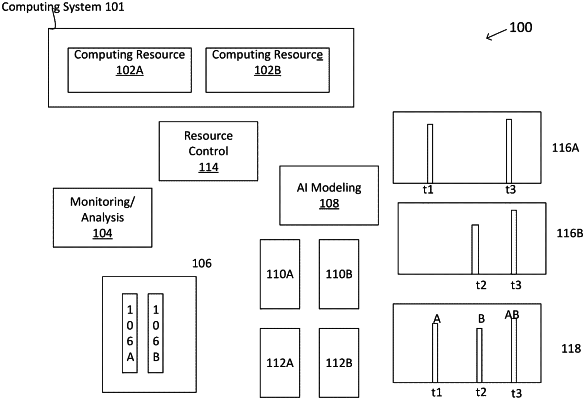| CPC G06F 16/2453 (2019.01) [G06F 11/3419 (2013.01)] | 20 Claims |

|
1. A computer-implemented method of managing computing resources of a computing system for processing data by the computing system, wherein the computing system includes first and second computing resources configured for processing of data by the computing system, and wherein the computer-implemented method comprises:
obtaining a first Artificial Intelligence (AI)-based resource-usage prediction of usage as a prediction of usage of the first computing resource at a future time period, and wherein the first AI-based resource-usage prediction is prediction made based on estimation model modeled using Artificial Intelligence (AI) based on at least one computing resource feature of the first computing resource;
obtaining a second AI-based resource-usage prediction of usage as a prediction of usage of the second computing resource at the future time period, and wherein the second AI-based resource-usage prediction is prediction made based on estimation model modeled using AI based on at least one computing resource feature of the second computing resource; and
combining, on a time line including the future time period, the obtained first and second AI-based resource-usage predictions, to generate an integrated AI-based resource usage prediction as a prediction of usage of the first and second computing resources of a computing system at the future time period;
determining, at least partly based on the generated integrated AI-based resource usage predictions, whether there would be at least one critical time in the future when at least one bottleneck in processing of the data by the computing system would occur during the future time;
identifying at least one identified critical time in the future time period when the determining determines that there would be at least one critical time in processing of the data by the computing system would occur; and
determining which one of the following would cause the bottleneck in processing of the data by the computing at the identified critical time: (i) the first computing resource, (ii) the second computing resource, and (iii) both of the first and second computing resources, when the determining determines that there would be at least one bottleneck in processing of the data by the computing at least at the identified critical time in the future time period.
|